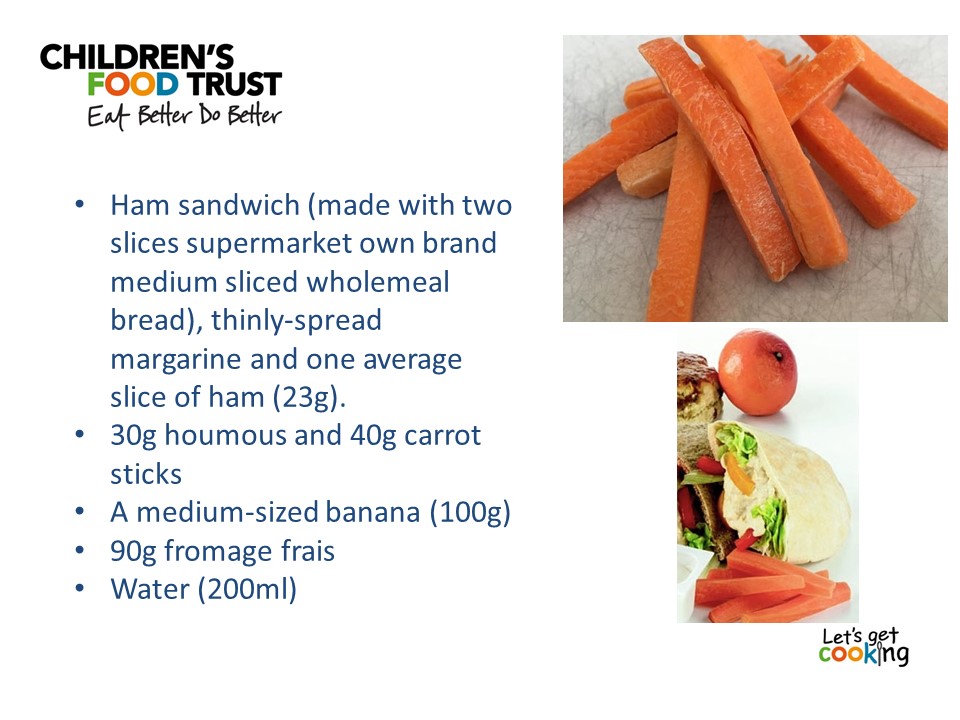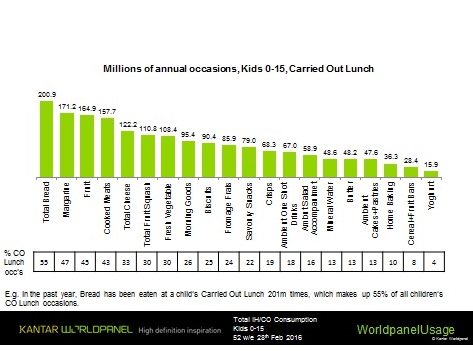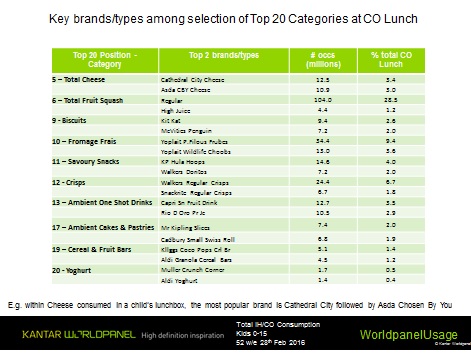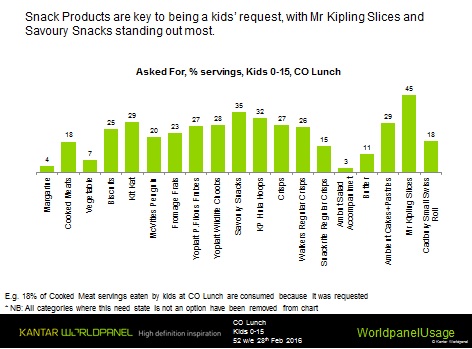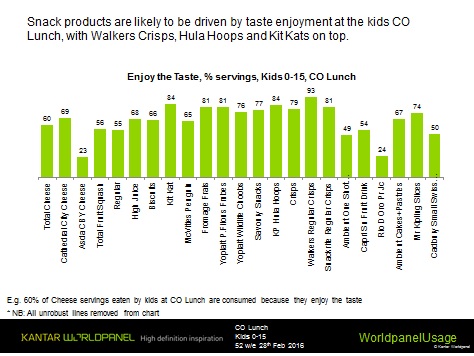The lunchboxes serving up a day’s worth of free sugars: packed lunches call for childhood obesity strategy
"This is so tough for parents, but kids are filling up on empty calories which won’t leave them feeling at their best."
Chocolate biscuits, crisps and sugary drinks serving up more than a 6 year-old’s entire daily free sugars limit continue to be staples of children’s lunchboxes in the UK, according to a new pester power index for packed lunches.
Data for the Children’s Food Trust from Kantar Worldpanel - which looked at the top types of foods eaten by under-16’s in hundreds of millions of packed lunches in the last year and why different foods are in there – found that products like crisps, chocolate biscuits and sugary drinks are among the top foods many children are either asking for in their packed lunches or which are in there because they say they enjoy their taste.
While fruit and vegetables were a welcome sight among the top twenty types of foods eaten, crisps, sugary cereal bars and sweet drinks are all in the list too – none of which can be sold in school canteens.
One of the most worrying trends appears in what children are drinking with their packed lunches – with almost one in five lunches (18%) including ‘one-shot’ fruit drinks. A standard portion of the most-consumed one-shot brands gives a 6 year-old more than their entire daily recommended intake of free sugars (5 sugar cubes) in one go.
Children’s Food Trust CEO, Linda Cregan, says: “This is so tough for parents. Families often choose packed lunches as simple reassurance that their children will eat something during the school day or on a day out – fussy eating is a huge worry for so many mums and dads. But when it’s foods like crisps, chocolate biscuits and sugary carton fruit drinks that kids are asking for in their lunchboxes, or eating because they say they like those foods, we’ve got a problem – they’re filling up on empty calories which won’t leave kids feeling at their best.
“This is why the forthcoming childhood obesity strategy must set out what more we can do to help parents and schools with this. Putting a packed lunch policy in place can be tough, but every school allowing packed lunches needs one if we’re going make life easier for parents and give kids a consistent message. School lunches must continue to lead the way – all of us need to be eating fewer biscuits and cakes and we should start to model that in schools, perhaps by offering only a portion of fresh fruit or yoghurt for dessert on at least a few days a week.
“And for parents, it’s never been more difficult to get children to eat well, in our society which has made it easiest and cheapest to choose less healthy options during the weekly shop – especially when your child is asking for specific products. The childhood obesity strategy is government’s golden opportunity to lay out practical solutions on both this and the many other negative influences on children’s diet.”
Examples of top packed lunch brands and how they stack up:
- Hula Hoops Original 24g bag: eaten in 14.6m packed lunches, delivering 14% of a 5 year-old’s recommended maximum daily salt intake
- Capri Sun orange juice drink (200ml), brand consumed in 12.7m packed lunches, delivering 105% of a 6 year-old’s recommended maximum daily free sugars intake
- Kit Kat two-finger milk bar (21g): eaten in 9.4m lunchboxes, delivering almost half (48%) of a 7-year-old’s recommended maximum daily free sugars intake
- Mr Kipling lemon slice (33g): brand eaten in 7.4m lunches, delivering almost half (49%) of a 12 year-old’s recommended maximum daily free sugars intake
Sample packed lunch menus using the most popular brands – and what they mean for a 7-10 year-old (based on the SACN 2011 recommendations for energy and the 2015 recommendations for free sugars)
Lunch 1:
- Cathedral City cheese sandwich with white bread and margarine (made with 22.5g cheese and 10g margarine)
- 24g bag of Hula Hoops
- A 100g banana
- A Mr Kipling Angel Slice (33g)
- 200ml Capri Sun Fruit Drink
Assuming that lunch should provide about 30% of daily intake, this packed lunch delivers more than five times (514%) the amount of free sugars that a 7-10 year-old should have at lunchtime, and more than the recommended amount of energy (143%), saturated fat (139%) and salt (114%).
It also delivers more than one and a half times (153%) the free sugars limit recommended for a 7-10 year-old in a whole day, 43% of their recommended daily energy and 42% of their saturated fat.
Lunch 2
- Ham sandwich with brown bread and butter (using 14g unsalted butter, 23g slice of ham)
- 25g bag of Walkers Regular crisps
- Yoplait Petits Filous Frube (2 x tubes – 80g, manufacturer’s recommended portion size)
- Kit Kat 2 finger biscuit (21g)
- Apple (100g)
- Regular blackcurrant no added-sugar squash (200ml)
Assuming that lunch should provide around 30% of daily intake, this packed lunch delivers more than two and a half times (274%) the amount of free sugars that a 7-10 year-old should have at lunchtime, as well as almost double (191%) the recommended amount of saturated fat and more than the recommended amount of energy (126%).
It also delivers almost the entire free sugars limit (82%) recommended for a 7-10 year-old in a whole day, more than half (58%) of their daily recommended limit of saturated fat and more than a third (38%) of their daily recommended limit of energy.
Notes to editors:
- See data slides Kantar Worldpanel/Children's Food Trust data
- Kantar provided data for 365.2m ‘carried out lunches’ eaten by 0-15 year-olds between February 2015 and February 2016; this includes lunches taken to school and elsewhere away from home.
- Based on the latest school census data and the most recent data on take up of school lunches, more than 5 million children (5,198,195 children) either have a packed lunch at school or go off-site for their lunch. That means more than 980m packed lunches could be eaten every school year
- What to put in a packed lunch
<Ends>
For more information, contact Claire Rick (press office) on 07867 536 794 or Ceriann Rush 07823 337308
About the Children’s Food Trust:
The Children's Food Trust is a national charity on a mission to get every child eating better: at home, in childcare, at school and beyond. Follow us on Twitter @childfoodtrust and like us on Facebook. Registered charity number 1118995
About Kantar Worldpanel
Kantar Worldpanel is the global expert in shoppers’ behaviour.
Through continuous monitoring, advanced analytics and tailored solutions, Kantar Worldpanel inspires successful decisions by brand owners, retailers, market analysts and government organisations globally.
With over 60 years’ experience, a team of 3,500, and services covering 60 countries directly or through partners, Kantar Worldpanel turns purchase behaviour into competitive advantage in markets as diverse as FMCG, impulse products, fashion, baby, telecommunications and entertainment, among many others.
For further information, please visit us at www.kantarworldpanel.com. Twitter: Google+: LinkedIn: RSS: Newsletter:
Press release distributed by Pressat on behalf of Children's Food Trust, on Friday 12 August, 2016. For more information subscribe and follow https://pressat.co.uk/
Packed Lunches Back To School Lunchboxes Fussy Eating Children's Food Child Nutrition Charities & non-profits Children & Teenagers Education & Human Resources Food & Drink
Published By

0114 2996901
media@childrensfoodtrust.org.uk
https://www.childrensfoodtrust.org.uk
Press office: call 07867536794 or 07823 337 308
Visit Newsroom
You just read:
The lunchboxes serving up a day’s worth of free sugars: packed lunches call for childhood obesity strategy
News from this source:


